Barbara (on right) and Doris Pawn, her costar in The Hero (1923), decorate a Christmas tree for children in a photo published in the December 5, 1924, issue of Picture Show magazine.
Thank you to Kevin John Charbeneau for sharing this photo with me.
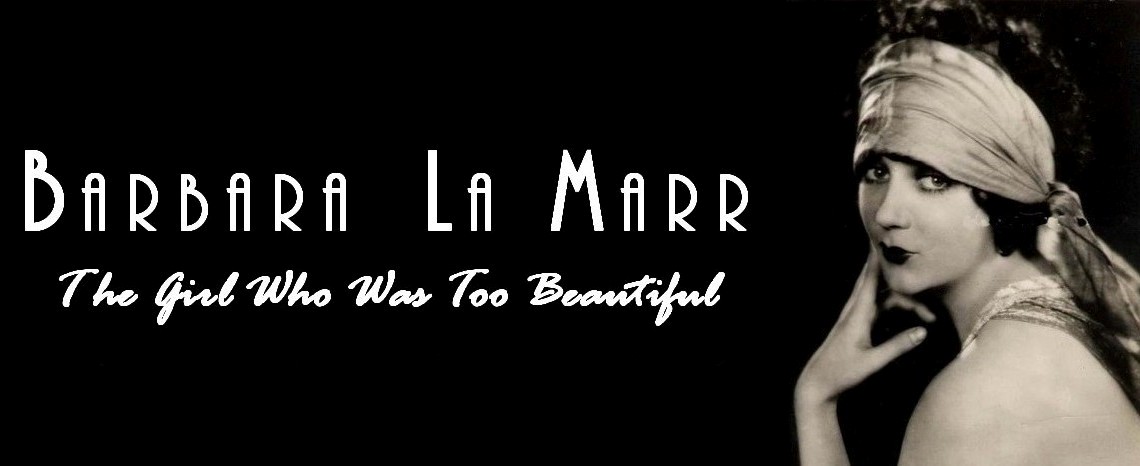
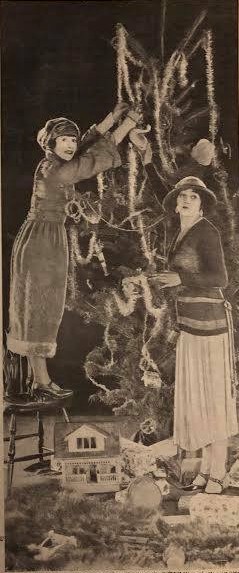
Barbara (on right) and Doris Pawn, her costar in The Hero (1923), decorate a Christmas tree for children in a photo published in the December 5, 1924, issue of Picture Show magazine.
Thank you to Kevin John Charbeneau for sharing this photo with me.
Many thanks to writer Dixie Laite, mayor at Dametown, for reading my book and spotlighting Barbara in Dametown’s Hall of Dame. Dixie writes, “Get ahold of Sherri Snyder’s definitive biography, Barbara La Marr: The Girl Who Was Too Beautiful for Hollywood. Sherri has the intelligence, insight and sensitivity to get Barbara’s complexity.” Dixie’s Barbara La Marr post may be read here. Be sure to check out Dixie’s many other fascinating posts as well!
Silent screen actress Barbara La Marr, known as the “too beautiful” girl, was a legend in her time, leading an astounding, oftentimes scandalous life described by newspapers of the day as “a wilder story than she ever helped to film.” Join me, Sherri Snyder, at Hollywood Forever Cemetery on Sunday, October 13 as I once again don my seamed stockings and paint on my bee-stung lips to portray Barbara in a one-woman performance piece that I wrote about her. Barbara’s banishment from Los Angeles at age seventeen for being “too beautiful”; her notable careers as an actress, a dancer, a vaudevillian, and a screenwriter; her death at age twenty-nine in 1926; and more will be spotlighted.
My performance is part of the Los Angeles Art Deco Society’s 36th Hollywood Forever Cemetery tour. Also featured on the tour are the stories—told by performers and historians—of silent screen god Rudolph Valentino, action hero Douglas Fairbanks Sr., actress and William Randolph Hearst mistress Marion Davies, filmmaker Cecil B. DeMille, slain director William Desmond Taylor, and over twenty other early Hollywood stars, movie moguls, and pioneers interred at Hollywood Forever. For ticket information and additional details, click here. This event typically sells out.
In addition to performing as Barbara on the tour for many years, this is my third year producing the tour since Frank Cooper, the man who created and ran it for thirty-three years, handed me the reins.

I will be at the Cinecon Classic Film Festival on Saturday, August 31 from 11 a.m. to 3 p.m., signing copies of my biography, Barbara La Marr: The Girl Who Was Too Beautiful for Hollywood. Book signings, part of the festival’s Memorabilia Show, will be located in the third floor meeting area at Lowes Hollywood Hotel (1755 North Highland Avenue, Los Angeles 90028). Information on the festival’s film screenings and other events may be found here. I’m looking forward to seeing everyone.
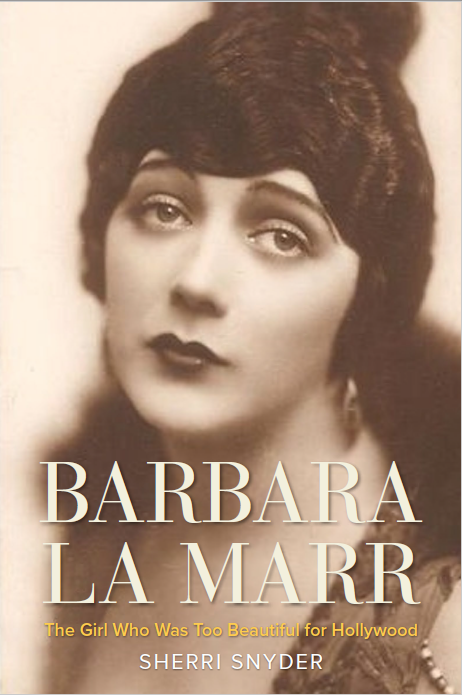
Happy Birthday Anniversary to Barbara La Marr (July 28, 1896 – January 30, 1926)! Though Barbara passed away at age twenty-nine from tuberculosis and nephritis, it was said that she lived many lives in one.
Thank you to David Heath, host of Cinema Chat, for having me on his podcast to discuss Barbara’s turbulent teenage years; her many matrimonial ventures; her accomplished careers as a stock theater actress, dancer, vaudevillian, and Fox Film Corporation story writer; her ascension to worldwide fame as one of the silent screen’s leading actresses; and more.
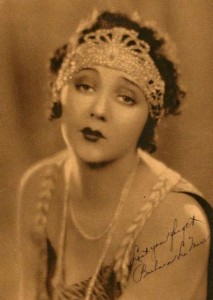
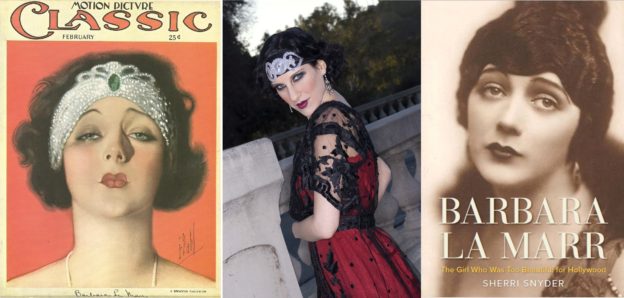
Silent screen actress Barbara La Marr was a legend in her time, leading an astounding life described by newspapers of the day as “a wilder story than she ever helped to film.” Join me, Sherri Snyder, on Saturday, March 30, 2019, at the Desert Foothills Library, 38443 North Schoolhouse Road, Cave Creek, Arizona 85331, as I portray Barbara in a self-authored performance piece, then lecture about her, detailing her oftentimes scandalous life from her humble beginnings to her tragic death at age twenty-nine in 1926. Barbara’s banishment from Los Angeles at age seventeen for being “too beautiful”; her notable careers as a dancer, a vaudevillian, a screenwriter, and an actress; her impact upon cinematic history; and her fierce determination to forge her own destiny amid the constant threat of losing it all to scandal and, ultimately, death will be spotlighted. I will also answer questions about Barbara and sign copies of my book, Barbara La Marr: The Girl Who Was Too Beautiful for Hollywood. The event, beginning at 11 a.m. and roughly an hour and a half long, is being held in the library’s Jones/Coates lecture hall and is FREE to attend. Attendees are advised to call 480-488-2286 or click here to reserve seats, as this is an encore presentation and seats may fill up again.
(Photo above: [L to R] Barbara La Marr; me [Sherri Snyder] as Barbara; my Barbara La Marr biography.)

After collapsing in a coma on the set of her final film, The Girl from Montmartre (1926), silent screen star Barbara La Marr, suffering from pulmonary tuberculosis, was forced into isolation in Altadena, California, by her doctor in October 1925. As the months passed, Barbara often worried that those in the outside world had forgotten her.
They hadn’t. Following her death at age twenty-nine on January 30, 1926, while she lay in state for four days in a Los Angeles chapel, an estimated 120,000 mourners—other Hollywood stars and friends who had worked with or known her intimately, fans who had worshipped her luminous image on film screens, and folks who had been touched by her kindness and unyielding generosity—filed past her golden velvet bier, paying their respects with tears and floral offerings.
Among the flowers engulfing her bier and filling the chapel to overflowing was a single red rose, tucked beneath her hand by a twelve-year-old girl. “To my Beautiful Lady,” the accompanying note read, “whom I have longed to meet in this life and whom I look forward to ‘knowing’ when my time is over here. May my life be as lovely and unselfish as yours has been.” The girl’s rose, considered by Barbara’s father to be the greatest tribute, was buried with Barbara.
(Photo above: Barbara La Marr, 1924)